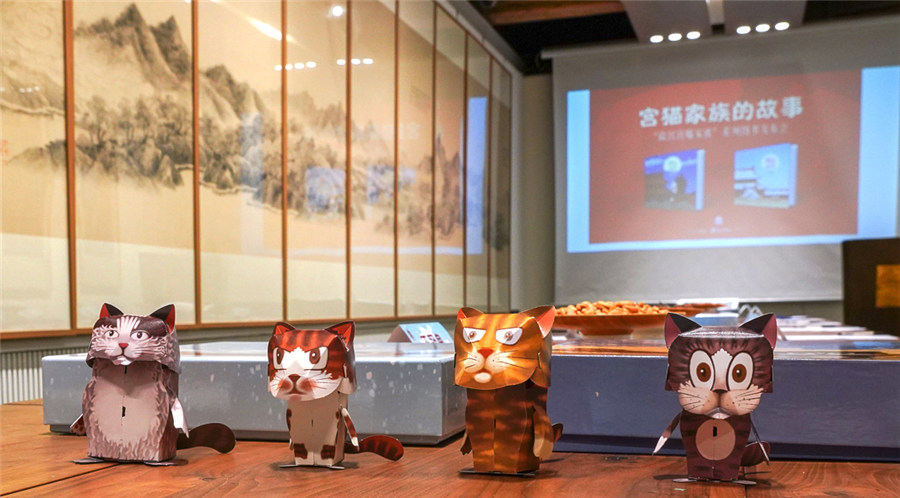IP protection needed for cultural creative industry to grow further
Cultural creative products inspired by cultural relics preserved at Beijing's Forbidden City, mystery boxes containing adorable dolls, and products resulting from collaboration between the comics, anime, and gaming industries are creating a new consumption phenomenon in China. However, with pirated and homogenized products also coming into the market, experts are calling for more efforts to protect intellectual property rights.

Cultural creative products, inspired by the cats living inside the Forbidden City, will be available this December. (Photo/Xinhua)
Statistics show that the size of China's cultural creative product market soared to 30 billion yuan ($4.57 billion) in 2020 from 6.3 billion yuan in 2015, an annual increase of more than 30 percent. Meanwhile, according to third-party statistics, there were more than 100 cultural creative companies in China in 2016. In 2019, about 115 companies were newly registered, and in 2020, about 245 were newly added.
Cuteness is a major selling point in cultural creative products. A young woman surnamed Luo is a fan of them, and her favourite is a product line featuring the adorable "royal cats" living in the Forbidden City. "I bought all 18 of the cat products. They are a little bit expensive, but they bring me a lot of joy," said Luo.
The cute cultural products, which used to be things bought mainly by teenagers, are gradually winning over consumers of all ages, said Han Xiaoning, an associate professor with the school of journalism at the Renmin University of China. The prosperity of the cultural creative industry, as well as the growing inclusiveness of the cultural industry, has also spurred consumption growth, Han pointed out.
Er Ci Yuan (two-dimensional space) entertainment that features anime, comics and games, which is becoming increasingly popular among Chinese youngsters, has become another factor driving the growth of the industry. Statistics showed that there were 370 million fans of Er Ci Yuan culture in 2020, and the figure is expected to hit 400 million by 2021.
Despite the rapid growth, the cultural creative industry is being flooded with a large number of fake and homogenized products, which see good sales as they boast a strong resemblance to the genuine products but are priced lower. What's more, these fake products tend to be produced immediately after the genuine products became a market hit.
Pirated products have infringed upon the IP rights of the genuine products, disturbed market order, and disrupted market competition, said Han, adding that they also hurt the motivating force behind the cultural creative industry.
Experts suggested strengthening policies to support the industry, and tightening government supervision and industry guidance are measures that could better cultivate and guide the development of the industry. "Meanwhile, greater efforts should be made to publicize knowledge on laws, regulations and policies on trademarks, copyrights, and design patents, while IP infringements should be punished in accordance with the law," Han said.
Photos
Related Stories
- Upcoming patent fair to focus on IP role in economic development
- China strengthens photo copyright protection
- China's draft civil code to strengthen property rights protection: experts
- China mulls amending law to strengthen copyright protection
- China achieves progress in IP system: official
- China enhances int'l cooperation on IP protection amid COVID-19: NIPA
- China issues guideline to strengthen juridical protection for IP rights
- China's contribution to global IP governance "remarkable"
- World experts reject bias against China's intellectual property system
- China achieves high-quality IP development
Copyright © 2021 People's Daily Online. All Rights Reserved.










